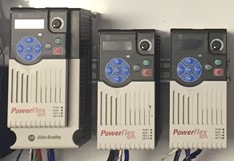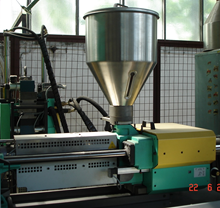
It’s no secret that automation is a current and positive force, but you may be wondering how exactly to implement new technology in your business process. With the increases in efficiency, reduced maintenance costs, and better working environments, it’s no wonder that automating has become increasingly popular. At INGITEQ, we are experts at identifying the most opportune processes for automation and outfitting a tailored solution. But allow us to bring you behind the curtain so that you can see how automation can benefit your operation. Various methods and tools can be used to introduce automation, including programmable logic controllers (PLCs), variable frequency drives (VFDs), automated level control, PID loops, and others. We’re here to explain more about what this can mean for your business.

Programmable Logic Controllers (PLC’s) are widely used to increase efficiency. PLC’s are used to automate manual processes through the use of field instrumentation such as switches, transmitters, and control valves. Processes that traditionally take many steps of slow, manual, non-ergonomic interaction can be streamlined through the use of a simple control panel with pushbuttons or a touch screen interface. PLC’s can also be used to monitor different aspects of processes. Being able to measure real-world data while processes are running gives the ability to see maintenance problems before they arise. There are different ways to do this, including measuring vibration on a pump motor, tracking power consumption, or logging the time it takes for a machine to complete a task.
PLC’s also introduce safer and more ergonomic tasks for operators to complete. Instead of turning handles on large ball valves, an operator can simply press a button on a screen. An increase in ergonomics has been shown to reduce the number of injuries at a workplace, introduce cost savings, and reduce employee turnover. Another interesting benefit to consider is that with the use of PLCs and today’s network hardware, we can bring operations online so that they can be accessed remotely. So how do you identify whether a PLC would be useful to you? PLC’s are extremely useful in industrial processes of all sorts. In fact, PLCs can be used to automate almost any process. But here at INGITEQ, we might suggest that installing a PLC on your office coffee machine is a bit extreme.

So, what is a VFD? About half of all global electricity is consumed by processes run with machine drives including mechanisms such as electric motors, pumps, and fans1&2. Using Variable Frequency Drives (VFDs), the energy usage of these processes can be decreased drastically. Instead of the motor running at full power whenever it is on, a VFD can cause it to use a lower frequency than what the motor is designed for at a full load. This is typically achieved by referencing a particular parameter that must be met within the process, like flow rate, pressure, or temperature. If the target parameter is being overshot by a motor, the VFD can slow down the motor by lowering the frequency. The target is then met, and energy savings are realized by the VFD. Using a VFD in a system also eliminates the need for other mechanical devices such a flow restrictors. These could be restriction orifices or control valves that further reduce the efficiency of the system by creating additional friction loss and requiring increased downtime for maintenance. In other words, a VFD can be way more effective than flow restrictors.

Automated level control is another widely used method to use process automation to your benefit. Many processes are currently run without any knowledge of the fullness or emptiness of a tank, hopper, or silo. This can cause a multitude of issues, depending on the industry. If you’re using a silo or hopper to feed a product into a process such as a concrete mixer or seed bagger, automating the level indication and control can greatly increase productivity. If the container becomes empty without the operator’s knowledge, the process comes to a halt. This leads to downtime and lost revenue. By having automated level indication, the operator can be warned when the supply is running low. Other processes have an even more critical need to automate level control. Chemical storage tanks are used in many industries from agriculture to oil and gas. Without automated level control, a tank can be at risk of overflowing and causing damage to equipment or harm to operators. By implementing simple controls such as automated shutoff valves, level switches, and continuous level transmitters, you can introduce greater levels of safety and avoid unnecessary loss of product. The result of using automated level controls is safer operators, a better bottom dollar, and happier management.
PID loops are control loops that can be used for many different processes such as furnaces, wastewater pumping stations, and conveyor belts. PID stands for proportional, integral, and derivative. A PID loop works by referencing a process variable such as a temperature or pressure and comparing that to a process setpoint. The PID loop’s goal is to reduce the error between the setpoint and the measured process variable. If a PID loop’s tuning parameters (proportional gain, time integral, and derivative) are programmed properly, the process can stay very close to the setpoint. This results in greater efficiency and a higher quality process. We may consider this one for your office coffee pot if you ask nicely.
All aside, now that you know more about the types of automation available to you, I challenge you to look around your work environment this week. In what areas can you be saving time and energy? What are some ways that you can provide a better and safer work environment for your employees? Amidst the world, as it is today, in what ways can you bring some of your processes online to be managed remotely at your fingertips? Let’s talk about these opportunities you’ve identified and pair them with our longstanding expertise. Let’s have a cup of coffee. Let’s innovate together.
References:

